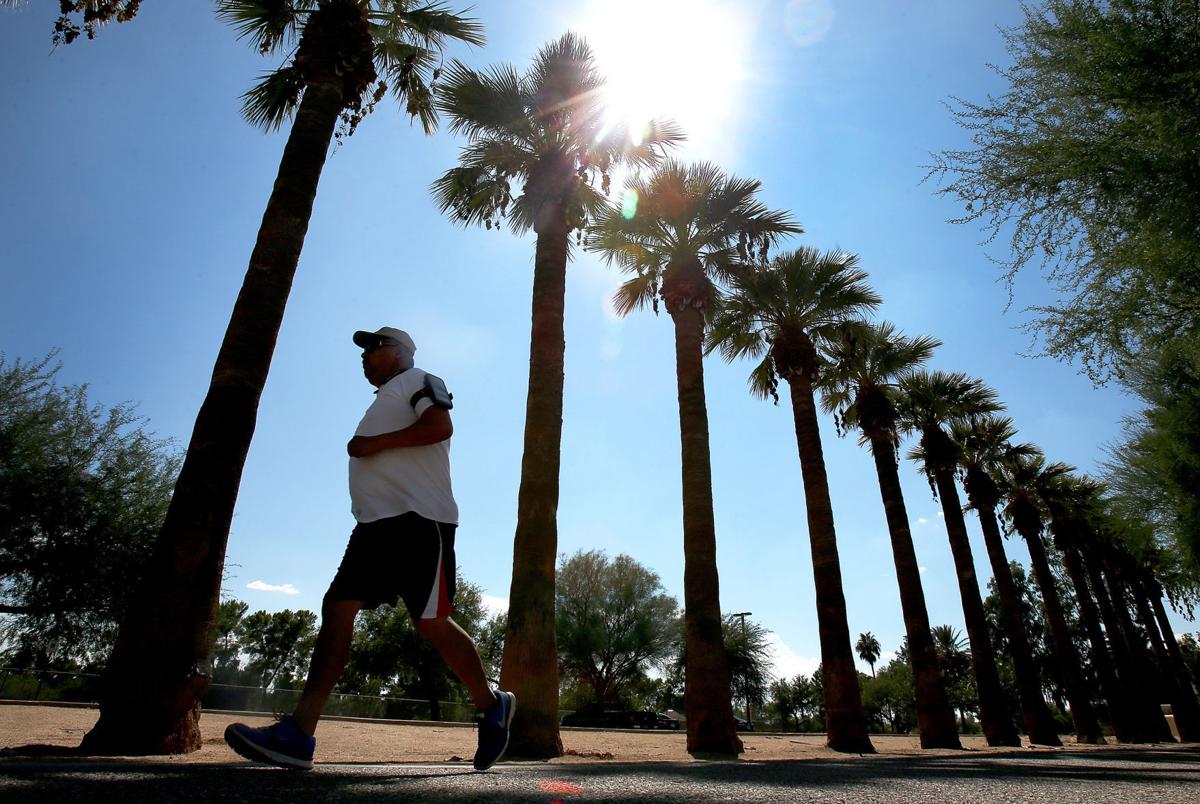Another year gone. Another record shattered.
For Tucson, 2017 came to a close with a yearly average temperature of 73.3 degrees, more than a full degree hotter than the previous record, which was a tie between the years 2016 and 2014 with 72.1 degrees.
“We didn’t just beat the record, we crushed it,” said Rob Howlett, a meteorologist at the National Weather Service in Tucson. The normal average temperature in Tucson is 69.4 degrees.
This might be a trend that we’ll just have to get used to. Every year since 2011 has been added to the Top 10 hottest years on record. Eight of our Top 10 hottest years have occurred since 2005.
The string of record-breaking years “is climate change come home,” said Michael Crimmins, a University of Arizona climate scientist. “We’ve gotten these record-breaking temperatures through warm, dry La Niñas and cool, wet El Niños, through all kinds of variability.
At least we’re not suffering alone. The entire country was hotter than usual, despite the current cold snap. Record-breaking heat gripped not just the Southwest, but also the Southeast and parts of the East Coast, Howlett said.
In Tucson, this is the 19th-straight year of above-normal temperatures, and 47 daily record temperatures (either daily highs or daily high minimums) were broken or tied, according to the NWS. The record-breaking year included 22 days that saw daily record high temperatures, including seven in November.
“This year was characterized by two very short wet seasons” in January and July, Crimmins said, “and a lot of heat in between.”
The year saw every month’s average temperature end up being above normal, and three months — March, June and November — ended up being the warmest on record for those months.
Last January saw about average temperatures and rainfall, but winter was short and punchy.
“We did winter in six weeks and a little early,” Crimmins said. “Then things got really weird.”
February through April was very warm and very dry.
Spring came weeks to months earlier throughout the entire country, said Theresa Crimmins, assistant director of the National Phenology Network, headquartered at the UA.
The persistent heat can disrupt physiological cues in plants and animals. Plants bloom and insects advance earlier and longer throughout the year, spreading diseases or disrupting crops. Even allergy season lengthens, she said.
We broke 100 degrees on May 4, about three weeks ahead of normal.
And even for die-hard Tucsonans, summer was no walk in the park.
“Summer had its own flavor of weird,” Michael Crimmins said.
The hottest June on record was bone-dry. The thermometer reached its yearly high at 116 degrees on June 20, just short of the record of 117 . There were seven 110-degree or higher days this year.
Conditions were ripe for wildfires. By the end of the year, more than 125,000 acres of Arizona land burned under 83 fires, both natural and man-made, not including prescribed fires, said Heidi Schewel, public affairs specialist for Coronado National Forest.
Every mountaintop telescope in Southern Arizona was at least potentially threatened by blazes. Residents evacuated when the Dragoon and Lizard fires merged in Cochise County.
“Wildfire season is now 12 months of the year,” Schewel said. “I looked as far back as January 2016. We’ve had a wildfire every month since then.”
Then came the “blessed July,” Michael Crimmins said, which brought 6.8 inches of rain in the last three weeks of the month, more rain than the average entire monsoon season. But the 8.57 inches of total monsoon rain, 0.05 of an inch short of breaking the Top 10 wettest, could be both a blessing and a curse.
The short-lived monsoon was followed by slightly more than half an inch by the year’s end and the warmest fall on record, drying out much of the vegetation produced in July.
This pattern of heavy rain, followed by a long stretch of dry and hot conditions, provides abundant fuel for fires.
November was another record-breaker for heat, sandwiched between the second-warmest October and second-warmest December ever recorded. In fact, the year ended with several days of 80-degree weather, about 16 degrees above normal.
This winter ushered in a moderate La Niña pattern, meaning more of the same, Michael Crimmins said.
For 2018, we should prepare for an active wildfire season, fewer wildflowers, which rely on a at least an inch of rain in the fall to get established, and possibly more record-breaking heat.





